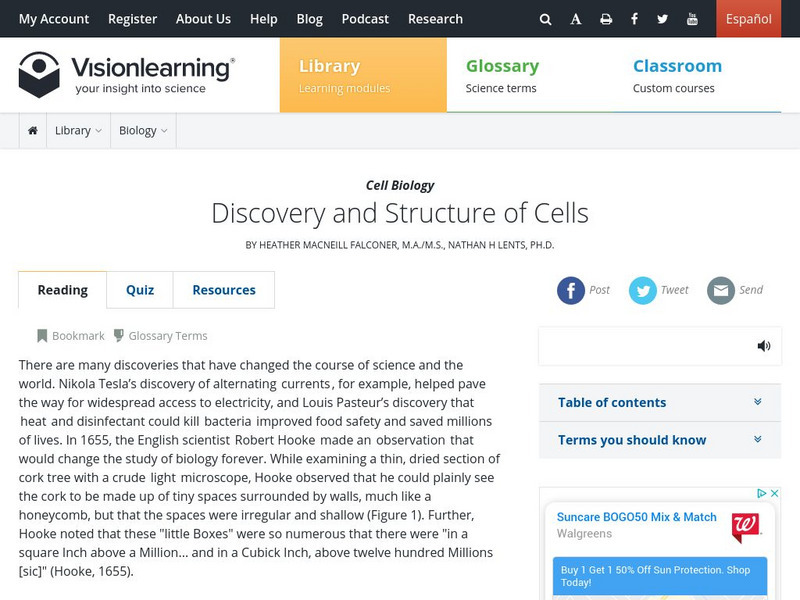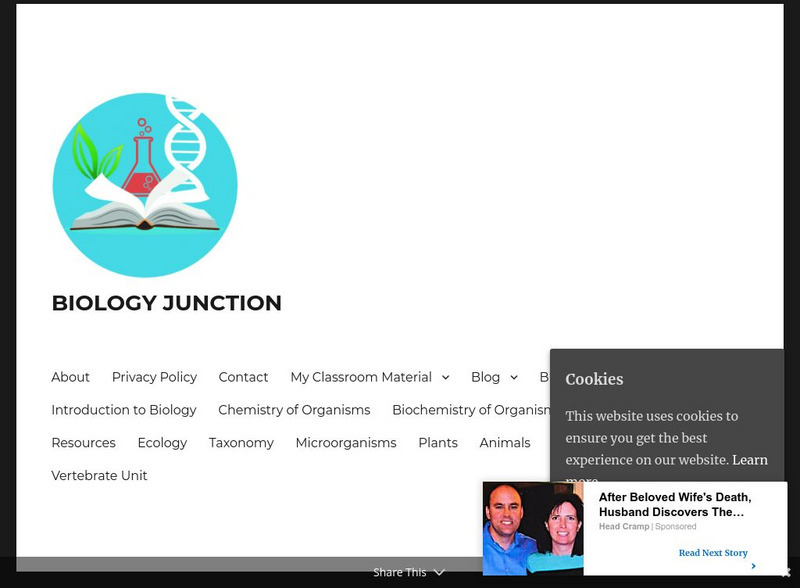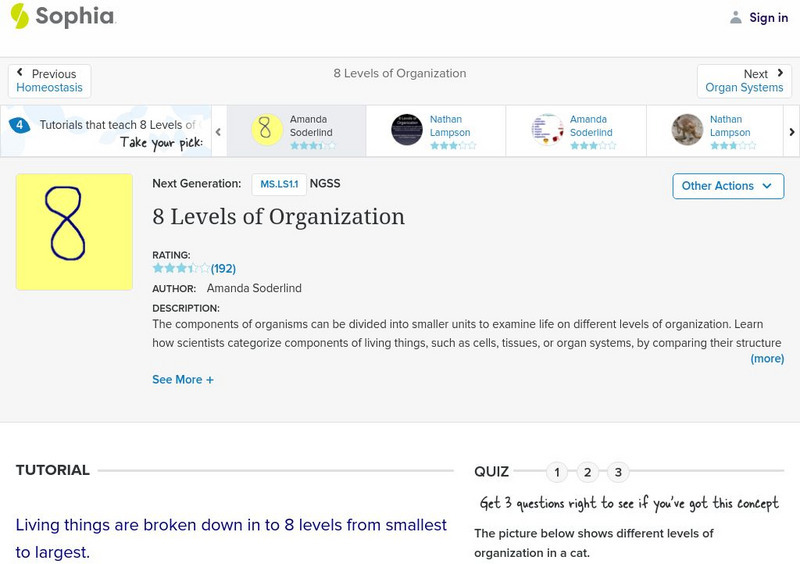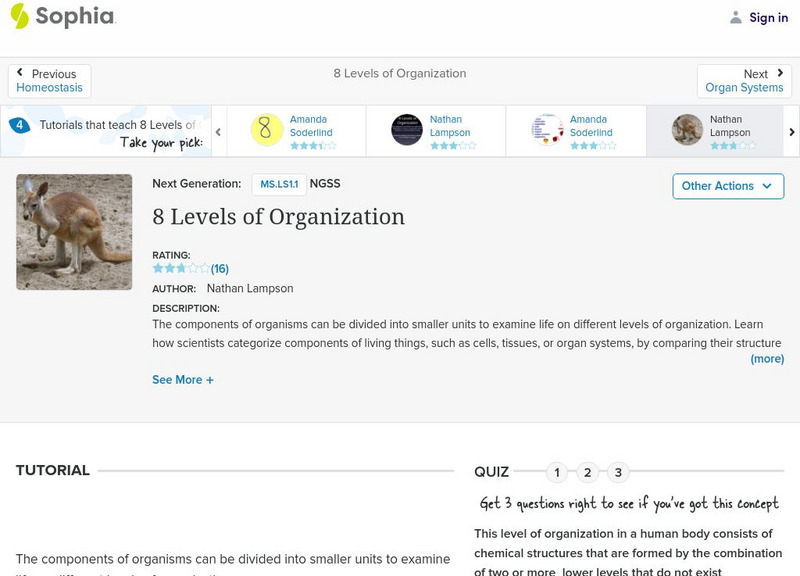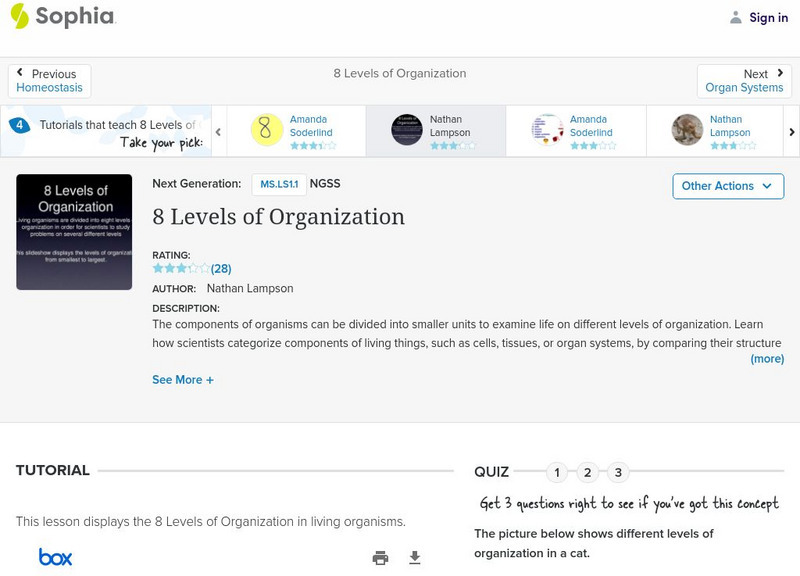Curated OER
DNA, the Awesome Thread of Life
Students examine how traits are passed to offspring. In this genetic reproduction instructional activity students develop a model of dna and learn about its structure, replication and function.
Curated OER
Genetic Disorders
Students examine how living cells reproduce and how traits are passed on. In this genetic reproduction instructional activity students research a topic and present it to the class.
Curated OER
How Do Cells Reproduce?
Students examine cell division and the process of mitosis. In this cell reproduction lesson students grow yeast and observe the results, and learn about the career of scientific illustration.
Curated OER
Meiosis
Students study meiosis and how it leads to variation. In this genetic reproduction lesson students complete a lab activity that calculates different genetic possibilities.
Curated OER
The Membrane Potential
Give this summary of 16 pages of a text to your class to deepen understanding of cell permeability, diffusion, ions, and more. The handout portion includes vocabulary clarifications, detailed color diagrams, and important information;...
Curated OER
Cell Energy - Bubbling Yeast
Young scholars identify that yeast are a single celled fungi that are a great model organism for studying respiration in the classroom. They also fill the bulb of a disposable pipet (eyedropper) with yeast, then submerge the pipet in a...
Curated OER
Slimy Cells
Students create three-dimensional cell models. They may choose to make either a plant or animal cell but must use a Ziploc bag as the cell membrane, slime for the cytoplasm, and strawberry baskets for the cell wall if making a plant...
Curated OER
Cell Study
Learners (females) are introduced to the cell. They discuss what a cell is, and students define what a cell is. Learners comprehend that all living things are made up of cells. They comprehend that life is defined as something that...
Curated OER
Human Epidermal Cells
Students explore epidermal cells. After following specified procedures for removing epidermal cells from their wrist, students view the cells with the use of a microscope. After creating a drawing of their observation, students label the...
Curated OER
Create Your Geometry Crossword
Learners learn how to identify cell addresses, format cell contents, add pop-up comments to a cell, and also apply conditional formatting. They use clues and words to make a geometry crossword puzzle pertaining to geometrical shapes.
Curated OER
Cells: A project in 3-D for Special Needs Students
Young scholars use the internet to research information about cells in order to create a 3-D model of a cell. They may choose either to research a plant or animal cell. Students locate and identify the parts of a cell and build a 3-D...
Curated OER
Practice with Plant and Animal Cells
Young scholars work in small groups to match cell vocabulary terms to the appropriate cell part in a photograph. They use a draw program to sketch a plant and animal cell.
Curated OER
DNA Blueprint for Life
Students isolate DNA from different food sources. In this biology lesson, students research DNA extraction. They analyze DNA stands collected from the lab, and compare the differences between each.
Curated OER
Slimy cells
Students study the parts of a cell. In this chemistry instructional activity students complete an activity in which they make as much slime as they want.
Vision Learning
Vision Learning: Cells: Discovery and Basic Structure
This module focuses on cell structure and how the organelles function together to form the smallest unit of life. The cell theory is also discussed along with the basics features of the cell. Site also includes an interactive practice...
Cells Alive
Cells Alive!: Plant Cell or Animal Cell
Take a peek inside a plant or animal cell, and examine the structure and function of each organelle.
Other
Massengale's Biology Junction: Cell Functions
A chart which identifies each part of a cell, the location, the description, and the function.
Sophia Learning
Sophia: 8 Levels of Organization: Lesson 2
This lesson will show the 8 levels of organization in living organisms, ranging from smallest to largest. It is 2 of 4 in the series titled "8 Levels of Organization."
Sophia Learning
Sophia: 8 Levels of Organization: Lesson 4
This lesson will show the 8 levels of organization in living organisms, ranging from smallest to largest. It is 4 of 4 in the series titled "8 Levels of Organization."
Sophia Learning
Sophia: 8 Levels of Organization: Lesson 1
This lesson will show the 8 levels of organization in living organisms, ranging from smallest to largest. It is 1 of 4 in the series titled "8 Levels of Organization."
Ducksters
Ducksters: Biology for Kids: Plants
Find some information about plants on this site. Learn about the science of biology including the cell, what makes a plant, types of plants, fun facts, and the basic structure.
















